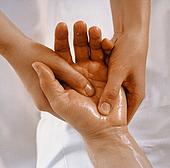The health condition known as endometriosis affects 10 to 15 percent of women during their reproductive years.
Endometriosis is found globally, and more than 90 million women will suffer from an endometrial condition during their lifetime.
Despite the vast numbers of females who are suffering from the symptoms of endometriosis, most people are aware of it and hopefully this is changing as more attention is being placed on preventative care—and women’s health issues on a whole.
Progesterone Cream for Treating Endometrial Cysts
Question for Dr. Leia: I am wondering if a progesterone treatment would work with endometrial cysts.
I was just diagnosed as having two cysts: one quite large (6×8 cm) and one small (2 cm). I have found a lot of information on naturally treating functional cysts, but not “chocolate cysts.”
Surgery seems to be the only option, and I’m not too excited about that. Please let me know if you know of anyone who has successfully treated endometrial cysts with natural progesterone cream
 Dr. Leia’s Answer: Endometrial cysts, also called endometriomas or chocolate cysts, consist of misplaced pieces of endometrium, or lining of the uterus.
Dr. Leia’s Answer: Endometrial cysts, also called endometriomas or chocolate cysts, consist of misplaced pieces of endometrium, or lining of the uterus.
These cysts are formed as a result of the disease process called endometriosis, whereby the lining of the uterus gets misplaced or moves outside of the uterus. Endometrial cysts can grow as large as a grapefruit and can completely cover over the ovaries, even preventing ovulation and, subsequently, fertility.
These cysts are called chocolate cysts because they are made up of darkened blood which resembles chocolate. Sometimes these cysts can rupture, spilling out their contents, and covering the ovaries, the Fallopian tubes, bladder, and intestines, causing scar tissue and intense pain.
Since your cysts are caused by endometriosis, your aim should be to treat the cause of your endometriosis, which is a complex hormonal and immune disease affecting women of child-bearing age.
Imbalances between estrogen and progesterone hormones are thought to be involved in this process, along with other undefined and unidentified causes, possibly including immune system disorders. Some doctors have had success in treating endometriosis with progesterone creams, so it is worth trying.
Be careful to avoid using creams which contains the methyl and propyl parabens and preservative chemicals, so you will want to read the labels carefully. And finding a cream that has a continuous delivery system is best.
Work of Dr. John R. Lee
 Dr. John R. Lee, a Harvard-trained physician, recommends a protocol using progesterone cream in this manner: Apply the cream beginning on day 6 of your menstrual cycle (day one is the day which you begin bleeding, or the first day of your period or menses), and continue until day 26, stopping before your menses or period begins again.
Dr. John R. Lee, a Harvard-trained physician, recommends a protocol using progesterone cream in this manner: Apply the cream beginning on day 6 of your menstrual cycle (day one is the day which you begin bleeding, or the first day of your period or menses), and continue until day 26, stopping before your menses or period begins again.
Be careful not to use excessive amounts of cream because it may prevent your monthly bleeding cycle from occurring and this is not a good thing to do, as the lining of the uterus will build up and this could lead to more severe consequences.
Using the cream should be continued each month in this timed fashion. Have patience, as it may take up to 4 to 6 months to see any improvement of your endometriosis or pain. However, if the cysts are large, they may not respond to this therapy or treatment, and you should obtain the approval of your doctor before starting this program.
Natural Treatments for Endometriosis
Another important product that I recommend for immune problems is called Orenda Immune.
There are other major life-style changes which are important in controlling endometriosis and hormonal balance. A wholesome, pure diet is extremely important, along with avoiding dairy products and meat in which the animals have been fed hormones to fatten them up.
Pure filtered water, avoiding xenotoxins from plastic bottles and food wrappers, and regular daily exercise are all equally important in keeping your hormones balanced.
Also, there is concern about safety of bottled water. Do not leave your water bottle in the car in the hot sun because it could leach out xenoestrogens into your water. Avoid putting plastic in the microwave oven also.
You may also want to read up on Vitamin D and Endometriosis research and studies. Herbal Treatments for Endometriosis may also be helpful.
 As you can see, there are no simple treatments for endometriomas because the causes are complex and varied. It is extremely important to prevent these cysts from recurring, so a broad approach to treatment is important. I would suggest that you work with a naturopathic doctor who specializes in women’s health and hormone balance, and I sincerely hope that this helps you to understand the nature of your problem.
As you can see, there are no simple treatments for endometriomas because the causes are complex and varied. It is extremely important to prevent these cysts from recurring, so a broad approach to treatment is important. I would suggest that you work with a naturopathic doctor who specializes in women’s health and hormone balance, and I sincerely hope that this helps you to understand the nature of your problem.




